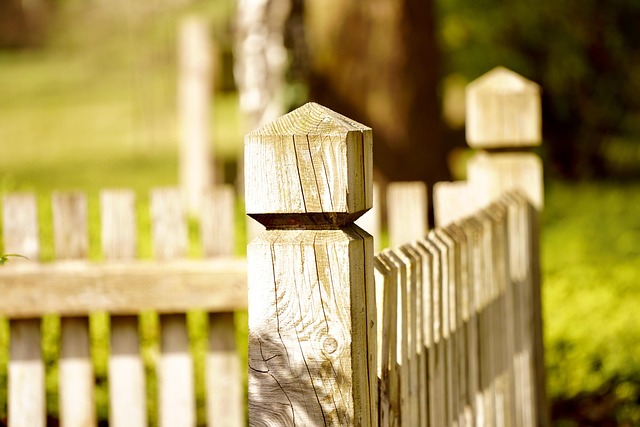Looking to enhance your New Bedford, MA property with a privacy fence? This comprehensive guide explores the benefits and diverse styles available, helping you make an informed choice. We’ll navigate the process from selecting the ideal installation location, understanding local permits and regulations, and following a step-by-step installation guide. Additionally, learn essential tips for maintaining your new privacy fence to ensure longevity and curb appeal.
- Understanding Privacy Fences: Benefits and Styles
- Choosing the Right Location for Installation
- Permits and Regulations in New Bedford, MA
- The Installation Process: Step by Step Guide
- Maintaining Your Privacy Fence: Tips and Tricks
Understanding Privacy Fences: Benefits and Styles
Privacy fences offer more than just a physical barrier; they are an investment in your home’s security, peace of mind, and property value. These fences serve as a protective shield against unwanted peep shows, intrusions, and noise pollution from neighbors or passing traffic. Beyond functionality, privacy fences also enhance the aesthetic appeal of your outdoor space, providing a sense of enclosure that encourages relaxation and enjoyment.
The market abounds with various fence styles designed to cater to different preferences and budgets. From sleek modern designs to traditional wooden panels, each style offers unique benefits. Wooden fences, for instance, exude warmth and natural charm while requiring regular maintenance. Vinyl fences, on the other hand, are low-maintenance, durable, and available in a rainbow of colors and patterns. Chain link fences provide both security and visibility, making them popular choices for commercial spaces and areas needing extra protection.
Choosing the Right Location for Installation
When considering privacy fence installation in New Bedford, MA, selecting the optimal location is a crucial step. The chosen spot should ideally offer both seclusion and visibility, depending on your preferences. For instance, if privacy is your primary concern, opt for areas with natural barriers like trees or bushes, ensuring minimal line of sight from neighboring properties. On the other hand, if you desire to maintain a view while still having privacy, strategically place the fence to take advantage of natural landscapes or architectural features.
Take into account local regulations and property boundaries as well. Check zoning laws and building codes related to fence installation in your area, ensuring compliance before proceeding. Additionally, consider the accessibility of the location for both construction equipment and future maintenance. Clear paths and adequate space will make installation smoother and guarantee easier upkeep over time.
Permits and Regulations in New Bedford, MA
Before installing a privacy fence in New Bedford, MA, it’s crucial to understand the permits and regulations that govern such projects. The City of New Bedford has specific guidelines regarding fencing, including restrictions on height, materials, and location. Failure to adhere to these rules can result in fines or even the requirement to remove the fence.
Permits are typically required for any structural changes to your property, and privacy fences often fall into this category. You should begin by contacting the local building department to inquire about specific permit types, application procedures, and any necessary plans or specifications. Understanding and following these regulations will ensure a smooth installation process and help you avoid potential legal issues down the line.
The Installation Process: Step by Step Guide
The installation process for a privacy fence in New Bedford begins with measuring and marking the perimeter to ensure precise fitting. Digging holes at designated points, typically every 6-8 feet, is the next step. These holes accommodate wooden posts that will support the fence. After setting the posts, a frame is constructed using brackets and rails, forming the backbone of the fence.
The horizontal rails are secured, followed by attaching the vertical pickets, creating the desired height and design. The final touch involves sealing the fence with a protective coat of paint or sealant to safeguard against rot and damage from the local climate.
Maintaining Your Privacy Fence: Tips and Tricks
Keeping your privacy fence in top condition is an investment in both its longevity and effectiveness. Regular cleaning is essential; brush away any debris, leaves, or vines that may accumulate. Use a soft-bristled brush for wooden fences to avoid damaging the finish. For metal fences, a mild soap solution and a soft cloth are suitable for cleaning.
Painting or sealing your fence annually will protect it from the elements and help maintain its aesthetic appeal. Store any tools and accessories used for maintenance in a safe place to prevent them from being stolen or damaged. Regularly inspect your fence for signs of wear, rot, or damage, addressing issues promptly to prevent further complications.
